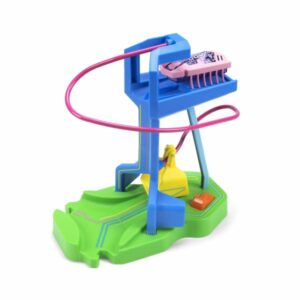Frequently asked questions
What exactly is a Hexbug?
Think of a Hexbug as a miniature, self-propelled robot! They’re tiny, often bug-like toys that move around on their own using vibrations, wheels, or tiny motors. They’re like little pets that don’t need feeding!
How do Hexbugs move? Do they have legs?
Most Hexbugs move using a small internal vibrating motor. This vibration makes their flexible legs or their whole body jiggle, propelling them forward in a surprisingly lifelike way! Some larger Hexbugs might have tiny wheels or geared legs.
Do Hexbugs need batteries?
Yes, they do! Almost all Hexbugs run on tiny button cell batteries (like the ones in watches). They usually come with batteries already installed, so you can start playing right away!
Are there different kinds of Hexbugs?
Absolutely! There’s a whole family of Hexbugs!
- Hexbug Nano: The most famous, these look like tiny centipedes and zoom around by vibrating.
- Hexbug Spider: These multi-legged robots look like, well, spiders! Some can even be remote-controlled.
- Hexbug Scarab: These speedy beetles flip themselves over if they get stuck.
- Hexbug VEX Robotics: These are larger, build-it-yourself robots that introduce basic engineering.
- Hexbug BattleBots: Mini versions of the famous TV show robots that you can battle!
What can I do with my Hexbugs?
Lots of fun things!
- Watch them explore: They’re fascinating to observe as they navigate obstacles.
- Race them: Many Hexbugs are perfect for racing on flat surfaces or special Hexbug tracks.
- Build habitats: Create mazes or play areas for them with blocks, books, or official Hexbug modular sets.
- Battle! If you have BattleBots Hexbugs, you can stage epic robot showdowns.
- Collect them: With so many different types and colors, it’s fun to collect them all!
Are Hexbugs educational?
They can be! While primarily toys, they offer a peek into basic robotics, engineering, and physics (like how vibrations create movement). It’s a fun, hands-on way to introduce STEM concepts without even realising it.




